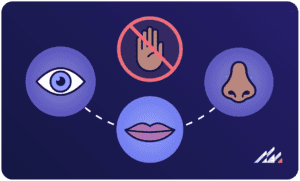Article
Bird flu: Here’s what you need to know
Over the last few months, you’ve likely come across headlines on avian influenza, also known as bird flu. As of July 15, more than 99 million domesticated birds (or poultry) have been affected in 48 U.S. states, 85 dairy herds have been affected in 10 states, and nearly 10,000 wild birds have been affected in the U.S. Additionally, bird flu has been reported in 23 countries, according to the World Health Organization (WHO), from 2003 through April 2024.
While bird flu does not typically infect humans, it is important for healthcare organizations to be mindful of the virus as public health entities continue tracking it. Here are a few points for healthcare professionals to keep in mind moving forward.

How it spreads and what to watch for
Avian influenza viruses can spread through bird saliva, mucous and feces. Signs a bird may be infected include sudden death, lack of energy, nasal discharge, reduced egg production and abnormal eggs. In dairy cattle, signs of infection include low appetite, reduced milk production and milk with an abnormal appearance.
The bird flu virus can enter humans through the eyes, nose or mouth. This can occur if humans inhale viral particles or touch a contaminated animal or surface and then touch their eyes, nose or mouth. Additionally, the virus can spread through liquids; for example, a person could contract the virus by eating raw eggs or drinking raw milk from an infected animal.
According to the Centers for Disease Control and Prevention (CDC), signs and symptoms of bird flu in humans include conjunctivitis, mild flu-like upper respiratory symptoms, pneumonia, fever, cough, sore throat, runny/stuffy nose, muscle/body aches, fatigue, shortness of breath, diarrhea, nausea, vomiting and seizures. Though the risk of infection is low in humans, approximately half of all cases have been fatal. Because these signs and symptoms occur with many other infections, knowing the signs in animals can help providers rule bird flu in or out if patients have been exposed to animals that may have been infected.

How to stop the spread
To prevent infection, the CDC recommends wearing personal protective equipment (PPE) when handling or coming in close contact with sick or dead animals, animal feces, litter, or water that may be contaminated. Currently, messenger RNA (mRNA) vaccines are being developed and tested for cows (to protect people who work with livestock) and humans. Additionally, there is currently one CDC bird flu test the Food and Drug Administration (FDA) has authorized, but it is only to be used for testing people that work closely with livestock.
As demonstrated during the COVID-19 pandemic, healthcare IT is critical to detecting and treating infectious diseases and mitigating outbreaks. While the number of bird flu cases remains low in humans, Altera Digital Health stands ready to partner with clients and pivot in response to any future public health challenges.
Interested in learning about Sunrise™ and its infectious disease management tools? Click here for more details.














